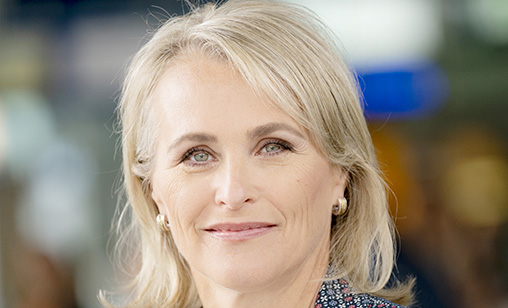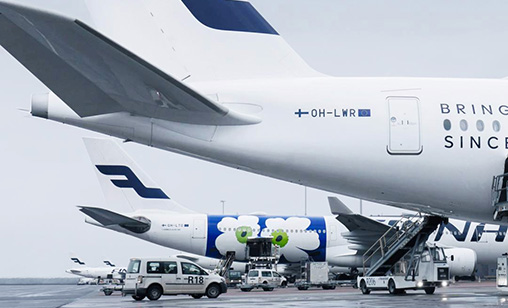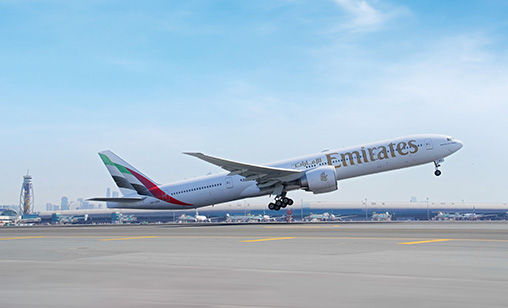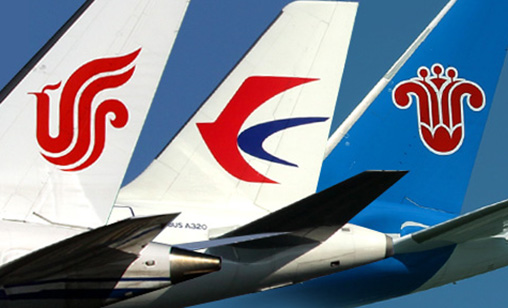Cover Story
Not a level playing field
China’s airline recovery is gathering strength. But it is a different story for its Western rivals as the economics of flying beyond the Bamboo Curtain are eroded by weak outbound Mainland demand, rising costs and extended flight times to skirt Russian airspace. Associate editor and chief correspondent, Tom Ballantyne, reports.
August 1st 2024
Recently, KLM CEO Marjan Rintel, echoed the views of her Western airline peers when she described the difficulties of flying to China in 2024. Read More » “It is not a level playing field. It takes two more hours for us, four cockpit crew and of course more fuel, which is not the cheapest today,” she said.
“It’s really frustrating and, I think, harmful for relationships. We are in an international world and in international competition. It’s very hard to have restrictions from Europe or Russia that are not valid for others.”
 |
These frustrations, including being barred from Russian airspace, are not only impacting carriers from Europe but from the Asia-Pacific and North America. And they are creating a critical imbalance in the airline market between China and the rest of the world.
Lufthansa Group CEO, Carsten Spohr, said the airline’s weakness in Asia did not stem from a lack of economic opportunities, but from “over-capacity provided by Chinese carriers”.
Global provider of data and aviation analytics, Cirium, has reported Chinese airlines, including China Southern Airlines (CSA), China Eastern Airlines (CEA) and Air China (AC), flew 90% of their pre-pandemic July 2019 international schedules last month. Foreign carriers operated 60% of their pre-pandemic flights in the same 31 days, Cirium said, adding it indicated a retreat from the Mainland market.
“Typically, Chinese carriers can have up to 30% lower costs than their international rivals. Mainland airlines are desperate for hard currencies and have embarked on a wide-ranging expansion,” OAG senior analyst, John Grant, said.
 |
At press time, only four European airlines were flying through Russian airspace and to Russian destinations: Air Serbia, Turkish Airlines, Pegasus Airlines and Belavia. Each member of this airline quartet can do so because their countries have close diplomatic ties with Russia. Of these, Turkish Airlines flies to the largest number of destinations in Russia, seven to be precise.
Unsurprisingly, the nation operating the largest number of airlines flying to and across Russia is China. Beijing Capital Airlines, CEA, CSA, AC, Xiamen Airlines and Hainan Airlines mostly are using Russian airspace to service their Western Europe networks. Major Middle Eastern carriers, including Emirates Airline, Etihad Airways and Qatar Airways, also are using Russian airspace.
With most Western carriers barred from Russian airspace, a restriction that adds as much as two hours and millions of dollars in extra fuel costs to fly Europe-China, more and more of these airlines either are trimming or cancelling their Mainland networks.
Weak Chinese travel demand, not to mention political issues, particularly with the U.S., has contributed to the schedule cutbacks.
 |
Qantas Group cited half-empty planes and low demand for travel to China when it suspended Sydney-Shanghai in July. Royal Brunei Airlines is blaming “market conditions” for the October suspension of its twice weekly flights to Beijing.
Virgin Atlantic is withdrawing from London-Shanghai on October 25 after operating the route for 25 years. A Virgin Atlantic spokesperson said: “After careful consideration, we have taken the difficult decision to suspend our London Heathrow- Shanghai services, after proudly serving this Asian hub city since 1999. However, significant challenges and complexities on this route have contributed to the commercial decision to suspend flying to Shanghai.”
British Airways (BA) will halt London-Beijing from October, but will continue to serve Shanghai. BA’s four days a week London-Beijing flights take around 2.5 hours longer than CSA’s daily flight on the same route. Italy and Denmark are seeing Chinese airlines expand, but local carriers reducing their capacity. Spain and Mexico are exiting the China market. Passenger flights between India and China are episodic since the pandemic ended.
 |
Airlines operating from North Asia to Europe also are taking major cost and demand hits. Japan Airlines Tokyo-London flights averaged 12 hours 12 minutes when overflying Russia. At press time, the flag carrier is operating over Alaska, Canada, Greenland and Iceland to the UK, a journey taking an average of 14 hours 38 minutes.
Another seriously impacted carrier is Finland’s Finnair. Its Helsinki-Tokyo flight used to take eight hours 57 minutes. Now, its aircraft fly north from Helsinki over Svalbard towards Alaska and then skirt Russian airspace via the Pacific to Japan, adding four hours and a huge increase in fuel costs to each journey.
China-U.S. networks are about 20% of 2019 schedules after a bilateral air services agreement between the two countries was suspended in 2020. U.S. airlines are running only 35 China return flights a week from an allocation of 50 every seven days. Chinese carriers have increased their schedules to 49 flights weekly.
In July, United Airlines reallocated capacity to other parts of the Asia-Pacific due to “dramatically” lower travel demand for China.
 |
The competitive landscape also has been skewed by the air fares Chinese airlines can offer vis-à-vis Western rivals. North American carriers used to fly the Polar route to Asian destinations such as China and India using Russian airspace. Not anymore. As a result, air fares have been pushed up. According to Business Traveler USA, the cost of flying from New York to Delhi on Air India in 2023 was nearly $1,500 and took 13 hours and 40 minutes. The same journey on a U.S. airline is now $1,740 for a 14 hour 55 minute journey.
One region not retreating from the Mainland market is the Middle East, where China has been increasing its influence. Dubai’s Emirates Airline has fully restored capacity to China. Kuwait Airways has increased frequencies on its China routes. In May, Bahrain’s Gulf Air began flying to China for the first time by launching to two Mainland destinations.
All of these factors have produced dramatic change in the China market. To date in 2024, Mainland seat capacity to intercontinental destinations is 74% of 2019 levels OAG data shows. Chinese airlines are flying 88% of their 2019 capacity while foreign airlines are supplying 55%. As a result, Chinese airlines are expanding their home market from 58% to 68%.
 |
Also holding back recovery are regulatory restrictions in Canada and the U.S. Their capacity to China is an averaged 22% of 2019 across all carriers whereas Western Europe-China is 90% of pre COVID 2019 levels. European carriers are operating below pre-pandemic levels but Chinese airlines are fully recovered and growing with their Western Europen presence 21% bigger in 2024 than pre-pandemic 2019.
The UK has replaced the U.S. as China’s largest intercontinental market based on seat capacity. It is a significant change from 2019 when the UK was China’s 8th largest market. The UK-China market is now 39% larger than in 2019.
Although China’s international traffic has been growing since pandemic-related restrictions were lifted on January 8 last year, it is recovering more slowly than other countries due to a faltering economy and a turn to domestic travel.
Nevertheless, China anticipates its home airlines will operate a record-breaking 700 million air passenger trips in 2024, surpassing the 619.6 million trips of 2023. China’s State Council has reported airline passenger trips in the first half of 2024 have increased 9% compared with the same months in 2019.
Even if China’s airline market has not yet returned to its 2019 performance, there is little doubt it is heading there quickly. Latest data from the country’s major airlines shows a sharp upward demand trajectory. In July, Air China passengers flown in the month increased 13.4% over 12 months ago and were 15.7% higher than the previous month. CEA passenger capacity increased 17.14% against the same month last year and was 115.57% of the matching 31 days in July 2019. CSA carried more than 15 million passengers, higher by 8.7% from a year ago. The “Big Three” airlines also have delivered much improved balance sheets for their first quarters of this year.
Guangzhou-based CSA has reported a quarterly net profit of $105.8 million, reversing a $270 million loss in the same months a year ago. Shanghai’s CEA booked a net loss of $112.4 million for the quarter, but the result was a significant reduction from its $530 million loss in 2023. Beijing-based Air China recorded a positive bottom line of $240 million compared with a $410 million loss in July 2023.
DR SHAWN WILLIAMS says:
September 21st 2024 12:16am